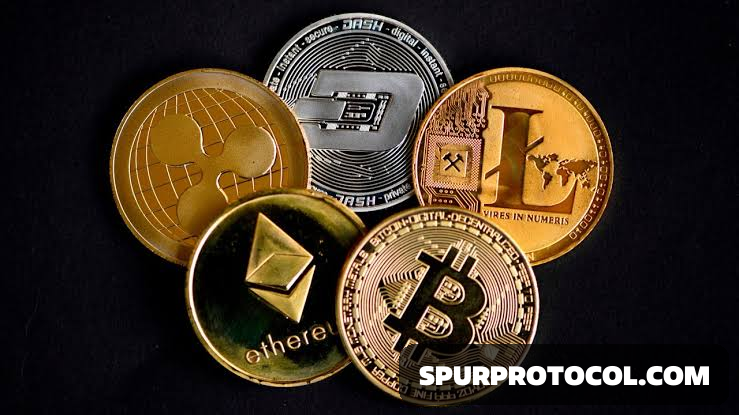to be protected if something goes wrong. Take two minutes to learn more.Beginner
Jun 20, 2023
What is the difference between a coin and a token?
The Skrill Crypto Academy explains the difference between a coin and a token. Read on to learn these key definit

What is the difference between a coin and a token?
What is a cryptocurrency?
As a reminder, a cryptocurrency is a new form of digital value secured by cryptography rather than the authority of a central bank. Cryptography is a method of protecting information through complex maths to ensure only the intended recipient can access it. This explains the root of the word cryptocurrency, combining cryptography and currency.
What is a coin?
Today there are over 23,000 different cryptocurrencies, which are often referred to as coins and even depicted as physical coins in images. But, they are in fact all virtual.
A coin is a cryptocurrency native to a specific blockchain. The best-known example is bitcoin, the unit of currency issued by the Bitcoin blockchain system that supports it.
As covered in our ‘What is Bitcoin?’ article, writers usually use an upper case ‘B’ when referring to the Bitcoin blockchain and a lower case ‘b’ when talking about the coin.
What is a token?
Another example of a coin is ether, the native currency of the Ethereum blockchain. Ethereum is a computing engine for other digital applications supplying processing power through the Ethereum Virtual Machine (EVM).
The EVM can process any instruction so long as it is written in a programming language called Solidity and structured in an agreed format known as a Smart Contract. Think of the way the EVM processes Smart Contracts like how a voice AI like Alexa interprets your instructions.
Ethereum’s function as a computing engine also allows the creation of distinct cryptocurrencies with unique identities and supply distributions, which are described as tokens.
A cryptocurrency token relies on the underlying blockchain to provide a way to process transactions, described as a settlement layer, because it doesn’t have its own. As long as tokens follow a set of agreed standards, Ethereum will manage token issuance and process transaction fees.
ERC-20 is the most common standard for creating fungible tokens. Fungible means that units are universally interchangeable, for example, in the way that one euro can be exchanged for any other euro.
An example of an ERC-20 token is Shiba Inu, a dog-themed cryptocurrency built on Ethereum. Within the coded definition of an ERC-20 token, a developer will define how many tokens will be issued, the rate at which tokens are issued and whether portions of the token supply are distributed to certain groups, e.g. to the token’s founders or to early users via an airdrop.
Ethereum also supports the creation of tokens that aren’t designed to be fungible but instead possess unique characteristics. These are known as non-fungible tokens (NFTs), and follow the ERC-721 standard.
There are numerous other Ethereum standards, each providing unique use cases. Several other blockchains are either EVM compatible or function similarly by using their own Smart Contract language to support token creation. For example, Cardano, Avalanche and Solana.
What is a utility token?
Ethereum’s function as a computing engine and issuer of custom tokens makes it suited for developers of digital applications (dApps). You can imagine it as a decentralised version of the Google Play Store, where any type of dApp can be supported if its function can be expressed in the Ethereum Smart Contract language called Solidity.
Some of those dApps include tokens designed to offer alternative forms of digital money by addressing some of the limitations of coins like Bitcoin and Ethereum. Others are designed to provide utility within a dApp, like in a game or metaverse. For that reason, they are described as utility tokens.
Utility tokens aren’t intended to be used outside of the dApp, though they are often traded on cryptocurrency exchanges.
What is a governance token?
Some dApps are designed to enable their users to participate in their design and development. The term used to describe how a community can democratically run an entity is a DAO - Decentralised Autonomous Organisation.
One of the core components of DAOs is having a token that accrues value to those within the community and a means of defining voting rights. These types of tokens are called governance tokens.
What is an altcoin?
Altcoin is a mash-up of two words:, ‘alternative coin’. If we look back to 2009, when bitcoin was the only cryptocurrency, the word coin emerged as a synonym for bitcoin units.
But, as new cryptocurrencies emerged, offering alternative use cases a different way to reference these new coins was needed. So, to reflect bitcoin’s primacy, a catch-all for everything other than bitcoin was introduced - ‘altcoins’.
Since then, Ethereum's importance as a platform to build other crypto applications has established its currency, ether, alongside bitcoin.
